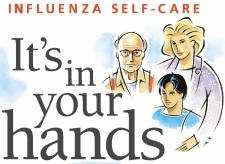
How to take a child’s temperature
There are four ways to take a child’s temperature:
- under the armpit.
- by the mouth (oral).
- in the ear.
-
by the bum (rectal).
Taking a rectal temperature is the best way to get an exact reading for children under two. Taking a temperature under the armpit is not as exact, but it will let you know if your child has a fever. When children reach the age of five, they can have their temperature taken by mouth.
A digital thermometer is best for taking temperatures by the armpit, oral, and rectal methods. Ear thermometers are more expensive. Do not use a mercury thermometer. Mercury is toxic and the thermometer could break. A fever strip does not give an accurate temperature. Ask the pharmacist any questions you may have when buying a thermometer.
Tips for using a digital thermometer
Always remember to press the button to turn the thermometer “on.” Follow instructions for armpit or mouth method. When you hear the “beep,” remove the thermometer and read the temperature on the display.
Armpit method
This method is used for newborns and young children.
- Place the tip of the thermometer in the centre of the child’s armpit. The silver tip must touch the skin.
- Make sure the child’s arm is tight against his or her body.
- Leave the thermometer in place for about one minute, until you hear the "beep."
Mouth method
This method should NOT BE USED for children under five years old.
- Carefully place the tip of the thermometer under the child’s tongue.
- With the child’s mouth closed, leave the thermometer in place for about one minute, until you hear the “beep.”
To clean the thermometer, wash only the tip with soap and warm (not hot) water and wipe off with alcohol. Dry well.
What is a normal temperature?
The normal temperature range varies, depending on the method you use:
Armpit: 34.7oC to 37.3oC (94.5oF to 99.1oF)
Mouth: 35.5oC to 37.5oC (95.9oF to 99.5oF)
Ear: 35.8oC to 38oC (96.4oF to 100.4oF)
Rectum: 36.6oC to 38oC (97.9oF to 100.4oF)
When a child is sick with an infection, it is normal to have a fever (temperature higher than 38oC (100.4oF)). It is part of the normal process of fighting an infection. A fever will not hurt a child. Usually, it goes away after three days.
Babies younger than three months old should see a doctor when they have a fever. Older children with fever who seem otherwise well and are drinking enough liquid can be treated at home. The degree of a fever does not indicate how serious the illness is; the child’s behaviour and overall appearance are generally the most important factors.
Taking an adult’s temperature
Take an adult’s temperature by mouth, in the ear or under the armpit. The armpit method is less accurate and is normally used only if the person is extremely drowsy or not clear mentally. Follow the same method as used for children when using a digital thermometer.
Normal body temperature varies between 35.8oC (96.4oF) and 37.2oC (99oF) in healthy people. It may vary throughout the day (rising as much as one degree); low in the morning and reaching a maximum during the late afternoon.
For more information contact:
Health Link Alberta
Edmonton, call 408-LINK (5465)
Calgary, call 943-LINK (5465)
Outside Edmonton and Calgary local calling
areas, call toll-free 1-866-408-LINK (5465)
visit: http://www.healthlinkalberta.ca/
Public Health Centres
(Monday - Friday, daytime hours), or
physicians or pharmacists
Also available in PDF